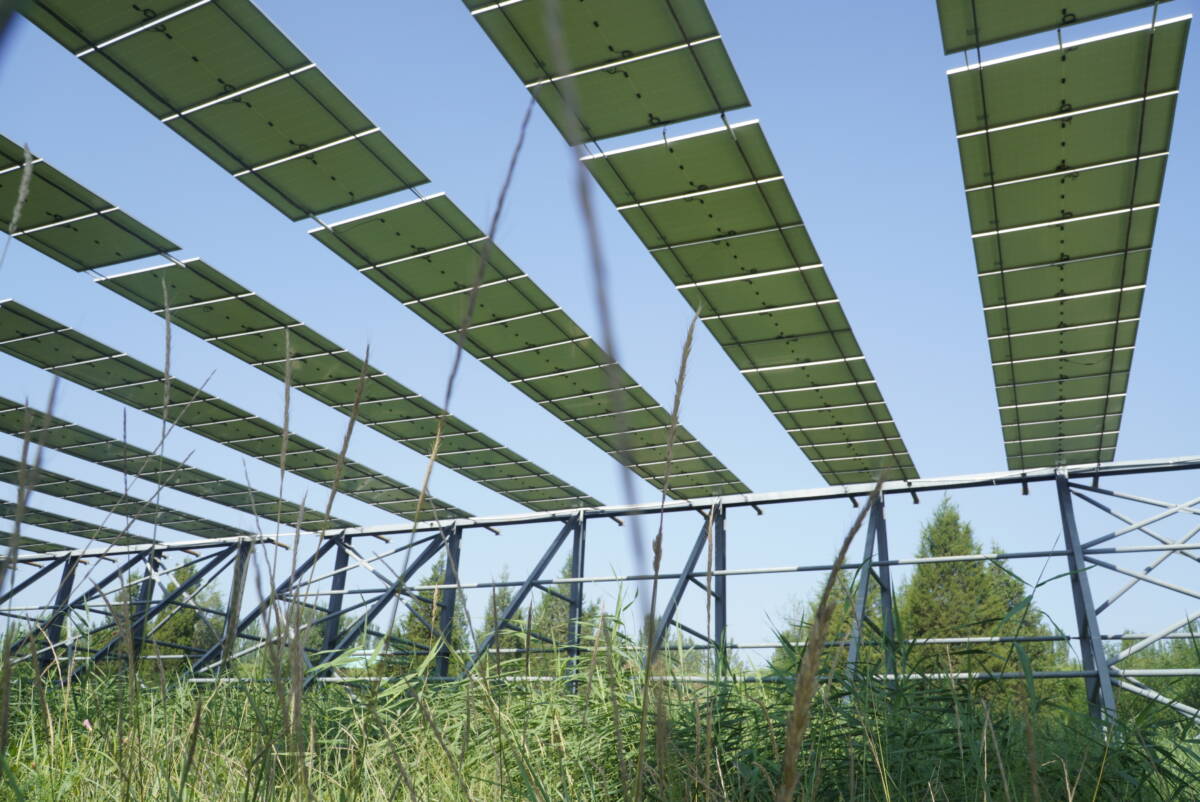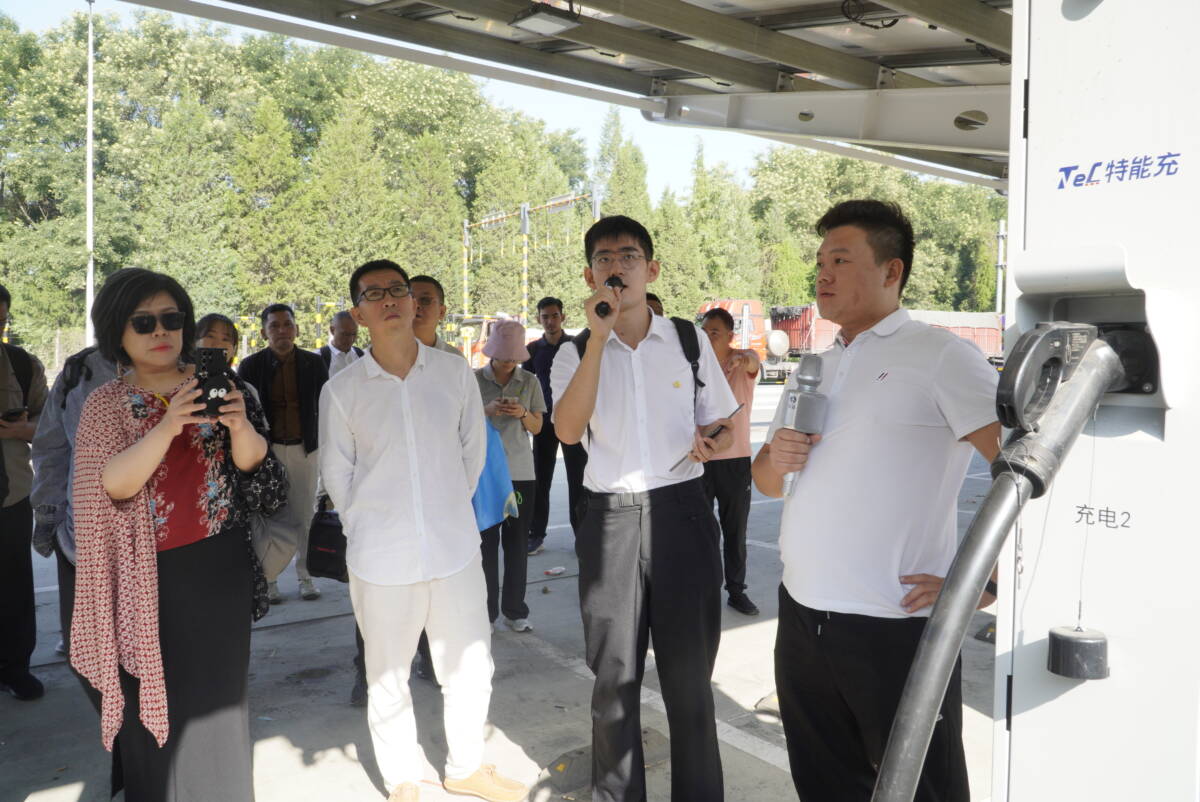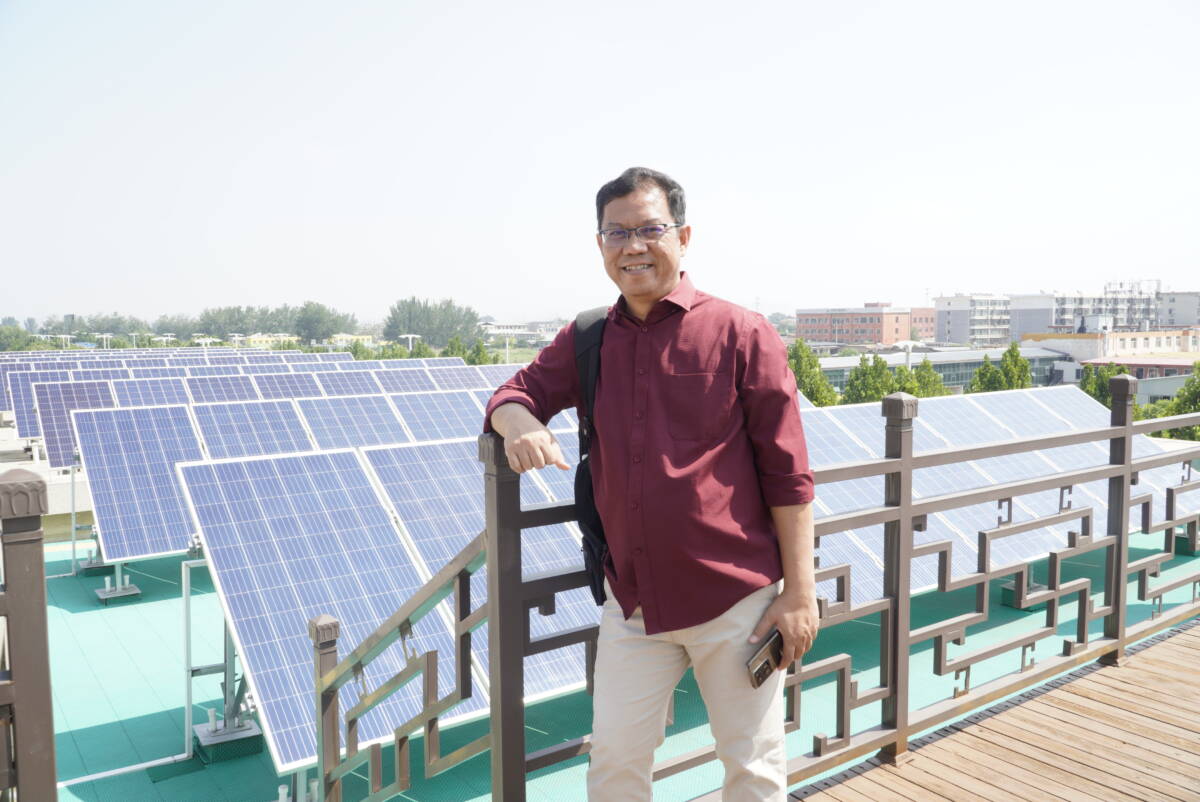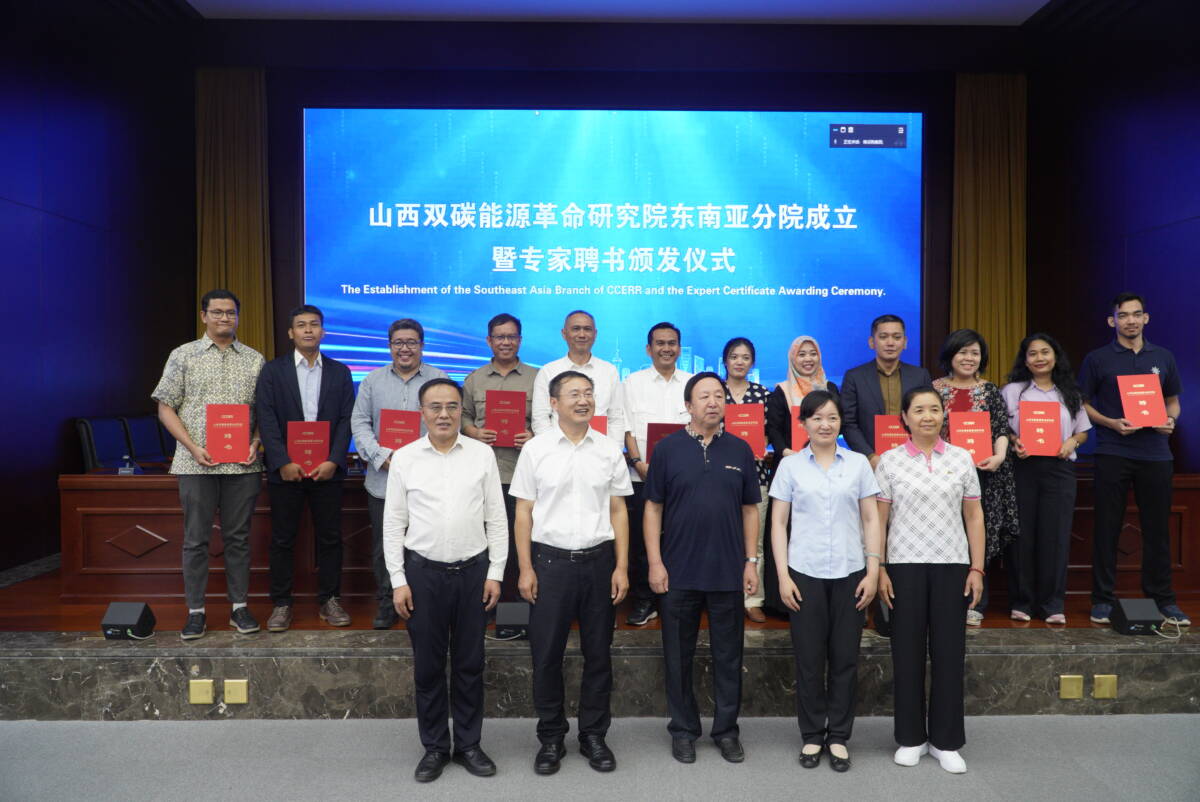One of the solar-powered benches at LVG Zero Carbon.
Taiyuan, China, August 1, 2024– In front of a building labeled “LVG Zero Carbon,” rows of solar energy technology applications are displayed. These various applications, which are prototypes or models, represent the future tools that will help realize zero-carbon cities and homes in Shanxi, China.

Solar-powered seating
On the third day in Shanxi, China’s largest coal-producing province, an Indonesian delegation—comprising representatives from Indonesia’s largest coal-producing provinces, East Kalimantan and South Sumatra, along with academics and think tank organizations, including the Institute for Essential Services Reform (IESR)—observed low-emission technologies in action (1/08/2024). These environmentally friendly innovations included solar energy systems and infrastructure to support electric vehicles. The visit was part of the agenda for the “Second Discussion on a Coal-Free Future and Field Visit on China-Indonesia Energy Transition,” held from July 29 to August 1, 2024, in Shanxi Province, China. This event was organized by the Shanxi Carbon Peak Carbon Neutral Energy Revolution Research Institute (CCERR), in collaboration with People of Asia for Climate Solutions (PACS) and the Institute for Essential Services Reform (IESR).

Vertical solar technology at Dayu Toll Road
According to a study by People of Asia for Climate Solutions (PACS), the Shanxi government is actively promoting renewable energy development, particularly in rural areas. As of May 2021, 9,963 villages were connected to 5,532 solar power plants built by the Shanxi government. This extensive access to renewable energy had benefited 720,000 poor families by the end of 2020.
In addition, the Shanxi government is committed to promoting low-carbon transportation by expanding charging infrastructure and creating an efficient, green, and low-carbon transportation system. According to data from the Shanxi Provincial Department of Transportation, by the end of 2023, there will be 14,900 low-emission buses in Shanxi, accounting for 94.2 percent of all buses in the province, and 24,800 electric taxis, representing 59.8 percent of all taxis in the province. The Shanxi government is also establishing charging infrastructure along provincial highways and expressways. It is estimated that by the end of 2025, the number of charging stations in provincial highway service areas will reach 1,349, with 2,562 parking spaces equipped with chargers.

Solar-powered charging for electric vehicles
The Shanxi government developed the Dayu Toll Station Solar Storage, Charging, and Power Supply Integrated Pilot Project. Solar power plants installed both vertically and horizontally within the toll area supply the energy needed for charging electric vehicles parked there. To address the intermittent nature of solar power, the Dayu Toll Station is equipped with a power storage system (battery).
After visiting the Dayu Toll Station, the group toured the Green Valley Zero Carbon Environmental Protection Science and Technology Park, also known as LVG Zero Carbon, which spans 150 acres with a construction area of 170,000 square meters. The park is still under construction. Once completed, LVG Zero Carbon is expected to become the world’s leading carbon-neutral demonstration park, offering a comprehensive experience in carbon-neutral technology.

Green Valley Zero Carbon Environmental Protection Science and Technology Park, also known as LVG Zero Carbon
Hari Wibawa, Head of the Economic and Development Funding Division at the Regional Development Planning Agency (Bappeda) of South Sumatra Province, expressed hope that China’s renewable energy technology innovations could also be applied in Indonesia. He also emphasized that the biggest challenge in utilizing renewable energy in Indonesia is related to authority.

Hari Wibawa, Head of the Economic and Development Funding Division at the Regional Development Planning Agency (Bappeda) of South Sumatra Province
“One of the targets to reduce emissions in South Sumatra is the use of solar power plants. Our plan for 2030-2034 includes developing PLTS to replace coal-based power plants, along with the development of biomass energy. However, one of the biggest obstacles is authority. If we want to develop new renewable energy sources, it must be directed by the central government, while the provincial government’s authority is very limited. But for renewable energy in specific areas, such as industrial zones, we can proceed with assistance, including from China, which already has the necessary technology,” said Hari Wibawa.

Muhammad Aulia, Green Economy Program Staff at IESR, is in the second row, far left, wearing a dark blue shirt
Muhammad Aulia, Green Economy Program Staff at IESR, emphasized the critical role of both central and regional governments in providing supportive regulations for the development of renewable energy and other environmentally friendly technologies.
“Policies that encourage the development of renewable energy, such as providing financial incentives, are essential. Additionally, the establishment of local content requirements (Domestic Component Level/TKDN) must be accompanied by a strategy that enables the renewable energy industry to grow. In terms of the regulatory framework, central and regional governments must coordinate effectively to ensure that regulations at both levels align rather than conflict,” said Muhammad Aulia.
After visiting the LVG Zero Carbon Science Park, the group toured the Taiyuan Design Research Institute for the Coal Industry, where efforts by the coal industry to reduce carbon emissions were discussed. Representatives from both Indonesia and China shared their experiences with energy transition. The meeting concluded with the signing of a memorandum of understanding (MoU) between IESR, the Shanxi Carbon Peak Carbon Neutral Energy Revolution Research Institute (CCERR), People of Asia for Climate Solutions (PACS), and the Energy Shift Institute to promote low-carbon energy development and collaboration in energy transition, carbon neutrality, and energy revolution.

